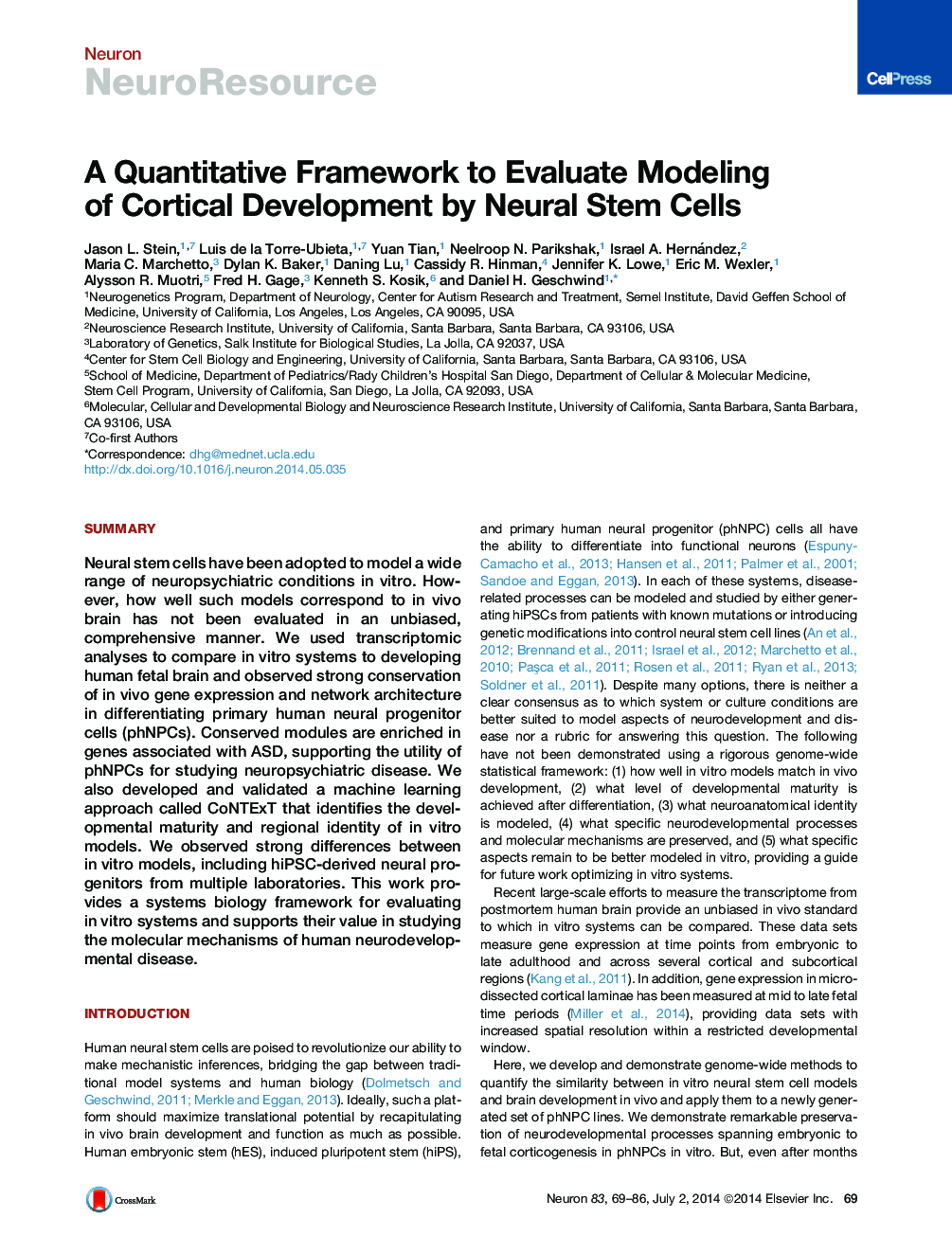| Article ID | Journal | Published Year | Pages | File Type |
|---|---|---|---|---|
| 4321106 | Neuron | 2014 | 18 Pages |
•Quantitative framework permits comparisons of in vitro models to in vivo brain•phNPCs recapitulate cortical development up to late mid-fetal periods•In vivo cortical gene networks implicated in ASD are preserved in phNPCs•Highlights key differences between widely used stem cell models and in vivo brain
SummaryNeural stem cells have been adopted to model a wide range of neuropsychiatric conditions in vitro. However, how well such models correspond to in vivo brain has not been evaluated in an unbiased, comprehensive manner. We used transcriptomic analyses to compare in vitro systems to developing human fetal brain and observed strong conservation of in vivo gene expression and network architecture in differentiating primary human neural progenitor cells (phNPCs). Conserved modules are enriched in genes associated with ASD, supporting the utility of phNPCs for studying neuropsychiatric disease. We also developed and validated a machine learning approach called CoNTExT that identifies the developmental maturity and regional identity of in vitro models. We observed strong differences between in vitro models, including hiPSC-derived neural progenitors from multiple laboratories. This work provides a systems biology framework for evaluating in vitro systems and supports their value in studying the molecular mechanisms of human neurodevelopmental disease.
